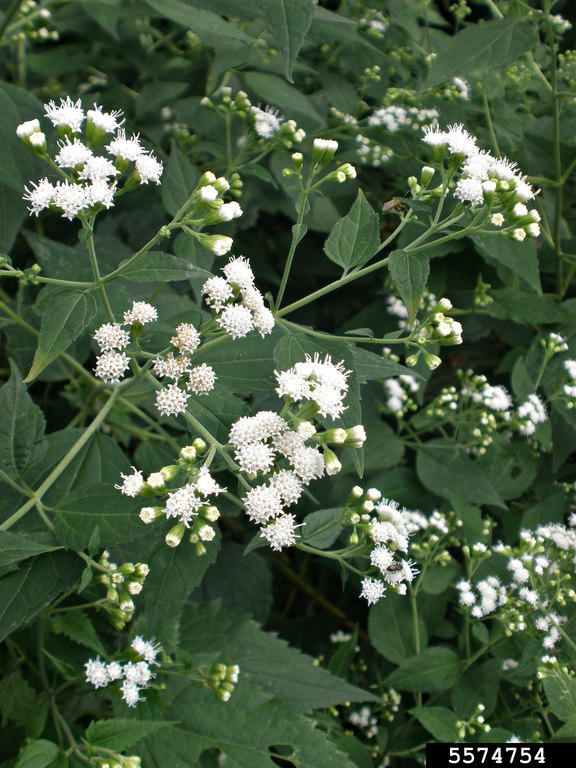
EPPO Alert List – Ageratina altissima

Dense stand of Ageratina altissima
Image 557474 from Ansel Oommen, Bugwood.org
Why
Ageratina altissima (Asteraceae) is recorded as a transient species in a number of EPPO countries though it is established in Austria and Italy. In Austria, is has recently been recorded to have spread significantly since its first detection in 2006. The Panel on Invasive Alien Plants have added Ageratina altissima to the Alert List with the aim to collect further information on established populations and evidence of impact in the EPPO region.
Geographical distribution
EPPO region: Austria, Belgium*, Czechia*, Germany*, Hungary*, Italy, Poland*
Asia: Republic of Korea
North America: Canada (New Brunswick, Northwest Territories, Nova Scotia, Ontario, Quebec), USA (Alabama, Arkansas, Connecticut, Delaware, District of Columbia, Florida, Georgia, Illinois, Indiana, Iowa, Kansas, Kentucky, Louisiana, Maine, Maryland, Massachusetts, Michigan, Minnesota, Mississippi, Missouri, Nebraska, New Hampshire, New Jersey, New York, North Carolina, North, Dakota, Ohio, Oklahoma, Pennsylvania, Rhode Island, South Carolina, South Dakota, Tennessee, Texas, Vermont, Virginia, West Virginia, Wisconsin)
* - transient populations
Morphology
Stems ascending to erect, sometimes semi-scandent, puberulent, up to 120 cm. Leaves opposite, ovate or broadly lanceolate, sometimes ovate-lanceolate (2-10 cm long). Heads clustered. Peduncles 1–5 mm, puberulent. Involucres 4–5 mm. Flowers are white, lobes sparsely short-villous. Cypselae glabrous.
Biology and Ecology
In the native range, A. altissima spreads rapidly through underground rhizomes. It can also produce seed, with more seed produced in its second and later years.
Habitats
In the EPPO region, A. altissima is recorded to occur in forest plantations. This is similar to the habitats the species invades in the Republic of Korea. It can also grow in disturbed habitats and along transportation networks (roads and railways). It prefers partial to full shade. It grows best in moist-humus rich soils.
Pathways for movement
Plants for planting: Ageratina altissima is traded as a garden ornamental plant throughout the EPPO region. Escape from gardens and areas where it has been planted is the likely cause of its occurrence in the natural environment.
Impacts
Ageratina altissima can form dense stands and compete with native plants. It has the potential to affect woodland regeneration. A. altissima is poisonous to livestock and if they ingest it, and meat and milk from animals that feed on it can be toxic to humans.
Control
Chemical control methods can be used against A. altissima but care should be taken and application may be limited in specific habitats. Manual and mechanical control is complicated by the extensive rhizomes. Mowing or cutting plants during flowering can reduce seed production.
Sources
Essl F (2025) The distribution of Ageratina altissima (L.) R. M. King & H. Rob. in Austria. BioInvasions Records 14(1), 13–18. https://doi.org/10.3391/bir.2025.14.1.02
Kang W, Song Y, Lee D, Kim G, Chae H (2019) Identifying habitats and corridors of an invasive plant, Ageratina altissima, in an urban forest. Landscape and Ecological Engineering 15, 277–287
Kim E, Choi J, SongW (2021) Introduction and spread of the invasive alien species Ageratina altissima in a disturbed forest ecosystem. Sustainability 13, 6152. https://doi.org/10.3390/su13116152
EPPO RS 2025/160
Entry date 2025-06
